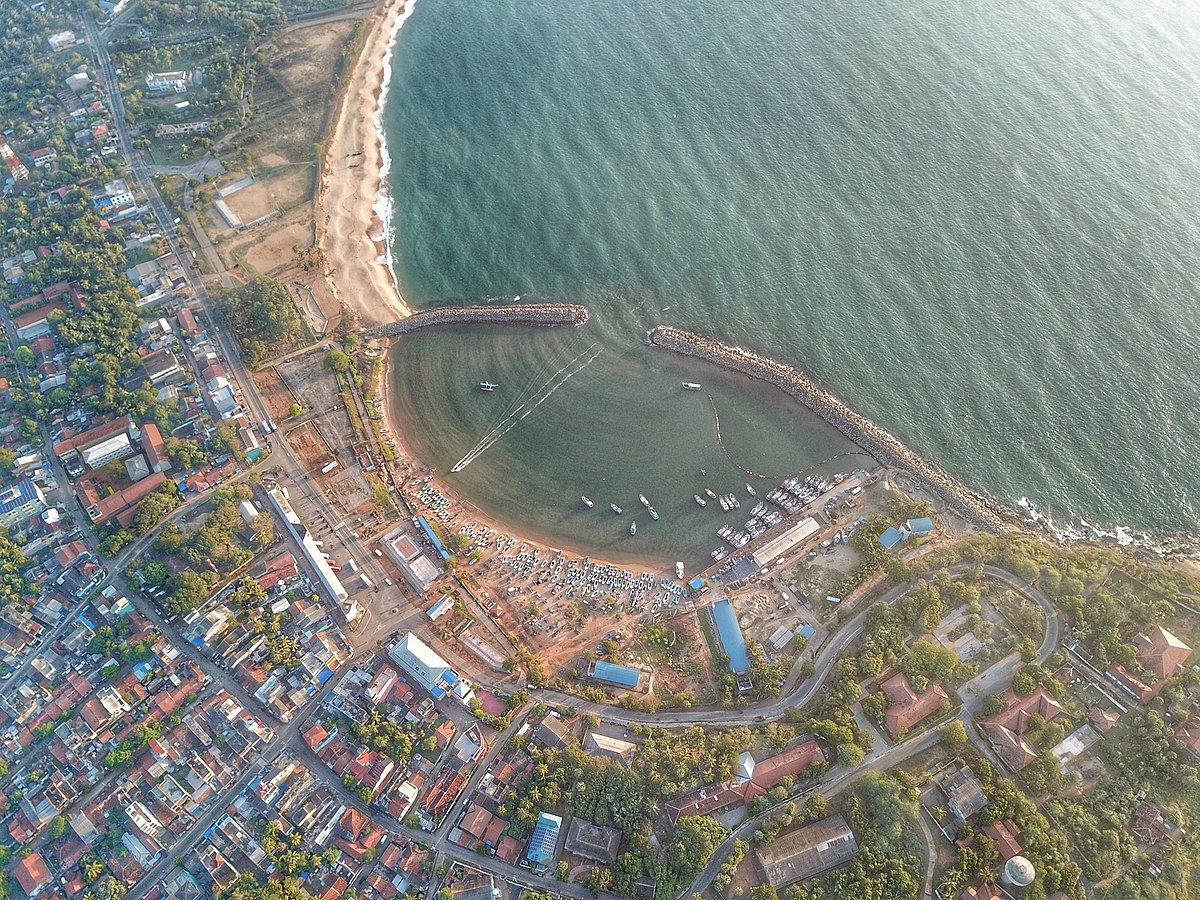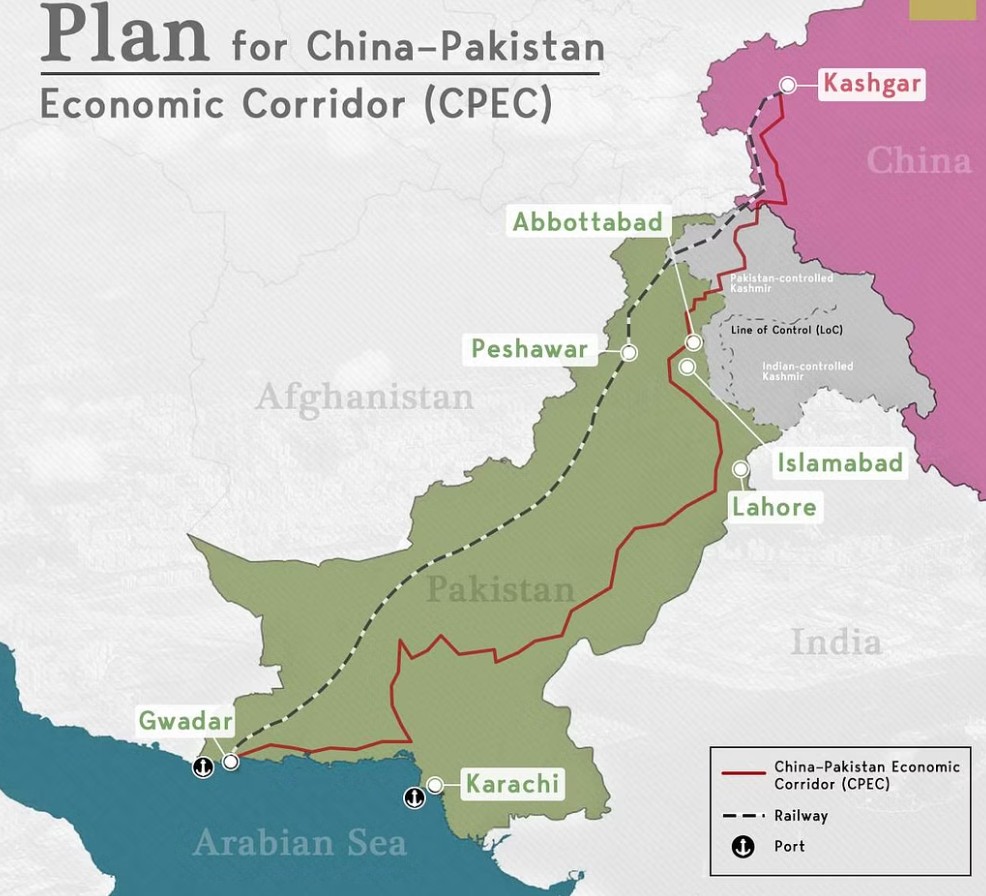Pakistan is a country of economic ruin. It is awaiting a monumental financial default without long overdue structural reforms sought by global creditors such as the International Monetary Fund (IMF) and the World Bank, along with bilateral partners.
Given the country’s poor credit ratings, high debt sustainability risks, and overall weak macroeconomic situation, these bilateral and multilateral creditors have explicitly preconditioned their financial credit lines to the reforms, arguing the money given to Pakistan evaporates through the corruption vaults to create any turn around in the country.
The primary reason behind Pakistan’s economic woes is its staggering debt levels, which, as of 2023, amount to nearly US$125 billion owed to external creditors, with approximately one-third to China.
This has refocused attention on the much-talked “Debt Trap Diplomacy” that Beijing has been accused of implementing across Asia and Africa in its pursuit of ‘neo-colonial ambitions.’
As per experts, with growing financial clout, Beijing has been flexing its economic muscle and burdening the socioeconomically vulnerable countries with large populations and ever-rising infrastructure-financing gap by lending billions of dollars.
Under this policy, it was speculated that China encouraged the poorer countries’ dependency as its lending practices were by nature predatory because of their opaque terms and conditions that led to debt accumulation.
Brahma Chellaney, the Indian strategic thinker who wrote about “Debt Trap Diplomacy” in 2017, contended that through the strategic use of debt, Beijing compelled debtor nations to make concessions, including the acquisition of vital assets and natural resources, thereby extending the influence of China’s military. This has been evidenced by Beijing’s takeover of Hambantota port in Sri Lanka for a lease of 99 years, apart from infrastructural assets across African countries.

China’s BRI For Vulnerable Nations
It has been revealed that China has used its much-touted transcontinental Belt and Road Initiative (BRI) to bring vulnerable countries for its neo-colonial pursuits. Chinese money often comes preconditioned with unwritten clauses for the borrower countries for using “Chinese companies…Chinese engineers, Chinese workers, and Chinese equipment.”
The US-based AidData Lab, in its report examining 13,000 projects under the BRI, primarily for infrastructure development such as the construction of roads, highways, bridges, and hydropower dams, valued at US$843 billion across 165 countries, said it has resulted in several lower and middle-income states accumulating nearly US$385 billion in ‘hidden debts.’
As New York Times’s Keith Bradsher emphasized, “Dozens of countries are struggling to pay their debts, as a slowing economy and rising interest rates push many nations to the brink.”
The story also rings true for Pakistan, as the country became the largest debtor state to China, with over one-third of external debts owed to Beijing. With its misplaced regional policy pursuits under the military’s direct or indirect control through its seven decades of existence, Pakistan encountered abysmal socio-economic infrastructure.
It presented a near-perfect template to Chinese luring, which promised upgrading and raising basic infrastructure through the BRI. As Pakistan joined the BRI in 2013, China’s predatory lending assumed exponential proportions, with the most strategic component of the project, the China-Pakistan Economic Corridor (CPEC), launched with the initial planned expenditure of US$45 billion that has topped US$62 billion over the years.
Pakistan’s Near-Perfect Debt Trap
The project cost of the Pakistan component of the CPEC itself has been reported to be over US$25 billion, implying Islamabad owed this much financial capital to Chinese creditors upfront, thereby making it the most significant contributor to Pakistan’s external debt accumulation.
While the majority of Chinese financial assistance to Pakistan has been through ‘infrastructure and energy investments,’ what has been conspicuous about it is its nature.
In contrast to the primarily held notions and carefully manufactured popular perceptions, Beijing’s investments in Pakistan constituted loans rather than grants, as was propagated by successive Pakistani governments backed by the military establishment.
What has made it more concerning are the flat commercial rates at which these loans were availed by Pakistan, over 5 percent, and in most cases at over 7 percent, way higher than the other international financial lenders such as the IMF, which lends at 2 percent.
These considerably higher interest rates have thrown Pakistan into a debt spiral, making it difficult for Islamabad to follow its debt servicing. Interestingly, the viciousness of Pakistan’s debt accumulation has reached such levels that the country’s debt servicing has even failed to repay the same interest rates as its principal borrowings.

Of the US$40 billion it has accumulated in the Chinese debts, the interest component, even if calculated at a conservative 5 percent rate, in Pakistan’s debt servicing alone would amount to US$2 billion.
For instance, as per the State Bank of Pakistan, the country’s total external debt servicing obligations for the Fiscal Year 2023 amount to US$20.81 billion (PKR 792 lakh crore), which includes a colossal interest component of US$4.42 billion (PKR12.46 lakh crore).
Given the poor credit ratings and its failure to comply with the conditions of international lenders, such as the micro-cum-macro economic reforms, including improving its tax collection regime, it has essentially been forced to rely on China to stay afloat and maintain critical sovereign wealth reserves to ensure short term sustainability.
This means Pakistan is forced to take new Chinese loans to repay the old ones at the interest rates dictated by Beijing, primarily commercial lending rates. For instance, on November 8, it was revealed that Pakistan was negotiating a loan of US$600 million from the Industrial and Commercial Bank of China (ICBC) and the Bank of China.
This trend has continued since 2017 when Pakistan started taking rescue loans from Beijing to meet its debt repayment requirements on the loans it availed as “grants” under the CPEC for developmental purposes.
It is unarguably manifested that Pakistan’s precarious economic situation, with a potential financial default, remains attested to its overwhelming debt levels, primarily to Chinese lenders.
Pakistan is effectively encircled in a vicious debt trap cycle orchestrated by China, where the latter seems content to keep Islamabad afloat like a medical patient on critical ventilator support.
However, this seemingly benevolent support positions China strategically to dictate terms, potentially paving the way for a takeover of critical strategic assets. This paints a gloomy outlook for the country’s future, which has potential ramifications for the country and the region itself.
- NC Bipindra is a 30-year veteran in journalism specializing in strategic affairs, geopolitics, aerospace, defense, and diplomacy. He has written extensively for the Times of India, New Indian Express, Press Trust of India, and Bloomberg News. He can be reached ncbipindra (at) gmail.com
- Follow EurAsian Times on Google News




